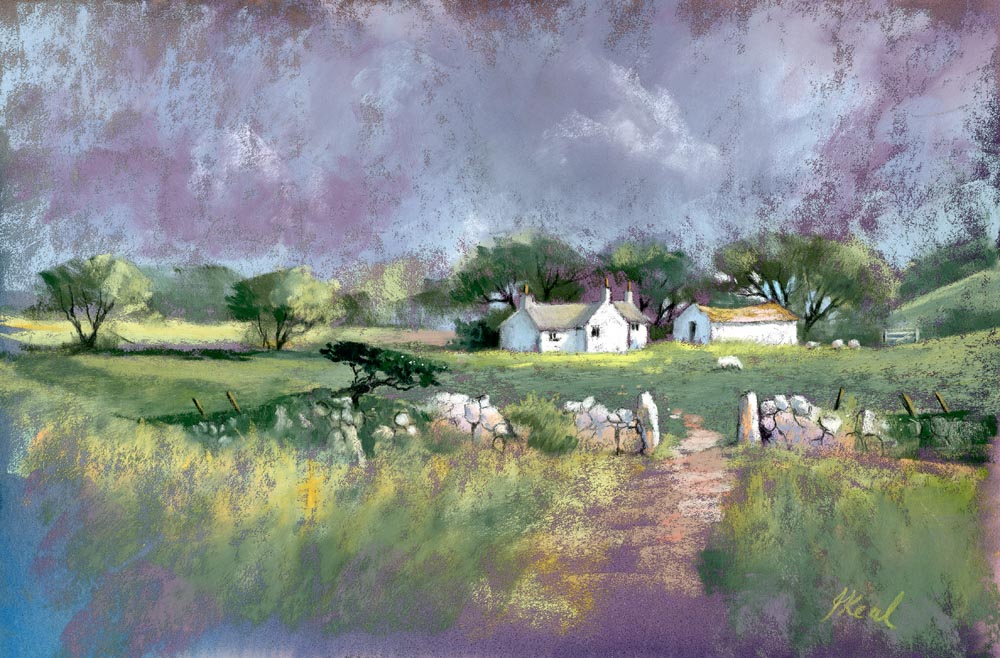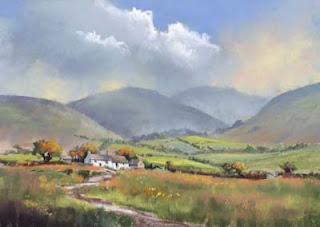One of the most common problems people encounter when painting landscapes is how to portray a realistic looking rock. It is mainly a matter of light and shade but colour is also an important element. Rocks are rarely one uniform colour and although sometimes the colour range is limited, subtle changes from one tint to another are very effective.
In the above image, which is an enlarged part of a painting that I am currently working on for an exhibition in Tenby this spring, the strong light increases the contrast between different planes making it easy to make the rocks look three dimensional. The light faces are defined with a soft transistion of lighter tones and some darker fracture lines, rendered with a sharp charcoal pencil.
It is also important to study the random shapes of rocks. If you make all your rocks the same size and shape and uniformly spaced they will look man-made rather than natural. Of course the best way to improve your rocks is to go out sketching and make some careful studies. Or, if rocks are conspicuous by their absence where you live, gather a pile of randomly shaped stones and make a detailed pencil study in your studio. Even this should help you to understand the play of light and shade and the random nature of their shapes.
If you want to join me on my painting course in
Lynmouth, North Devon in May I will be sketching and painting rocks, cottages, trees and water. North Devon has some beautiful scenery and we shall be well looked after by
Cheddar Painting Holidays









